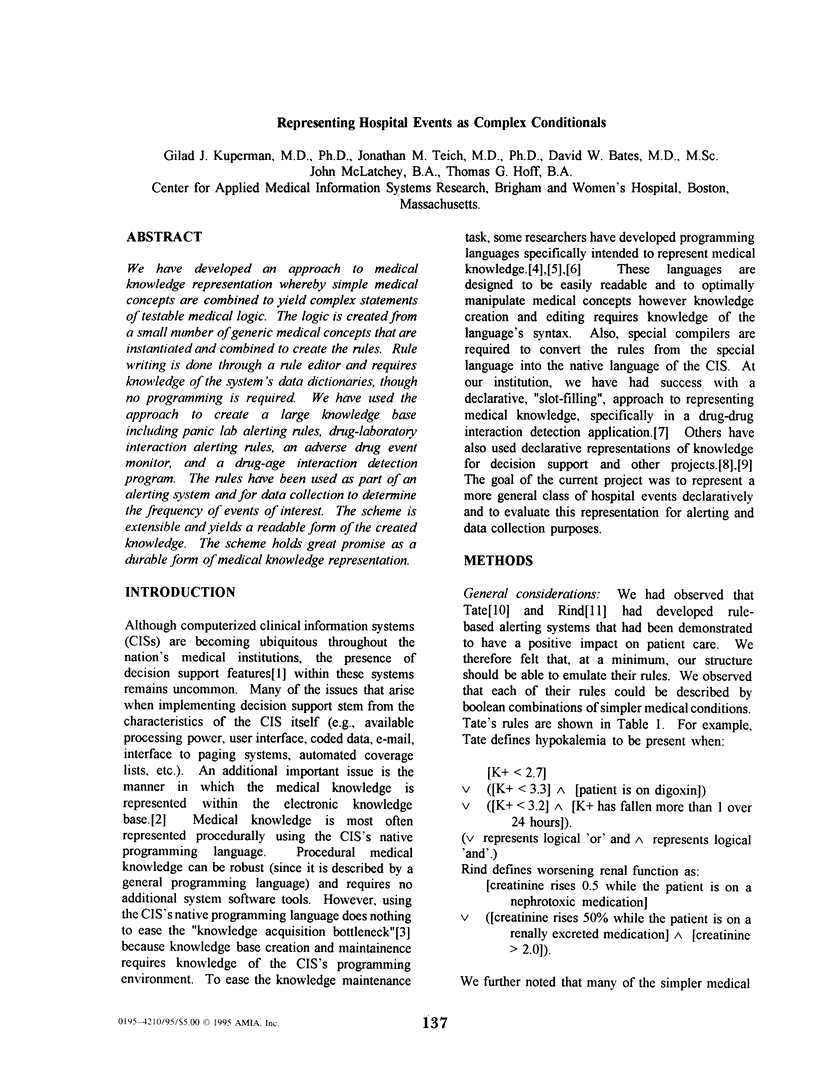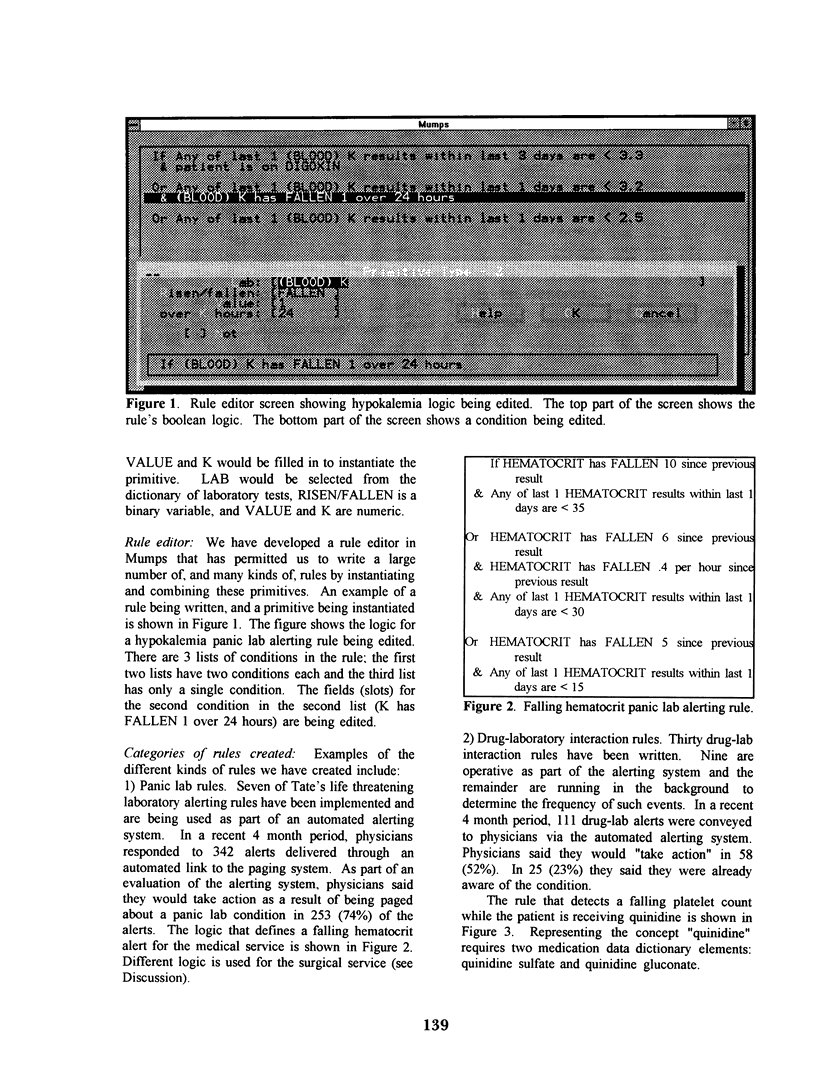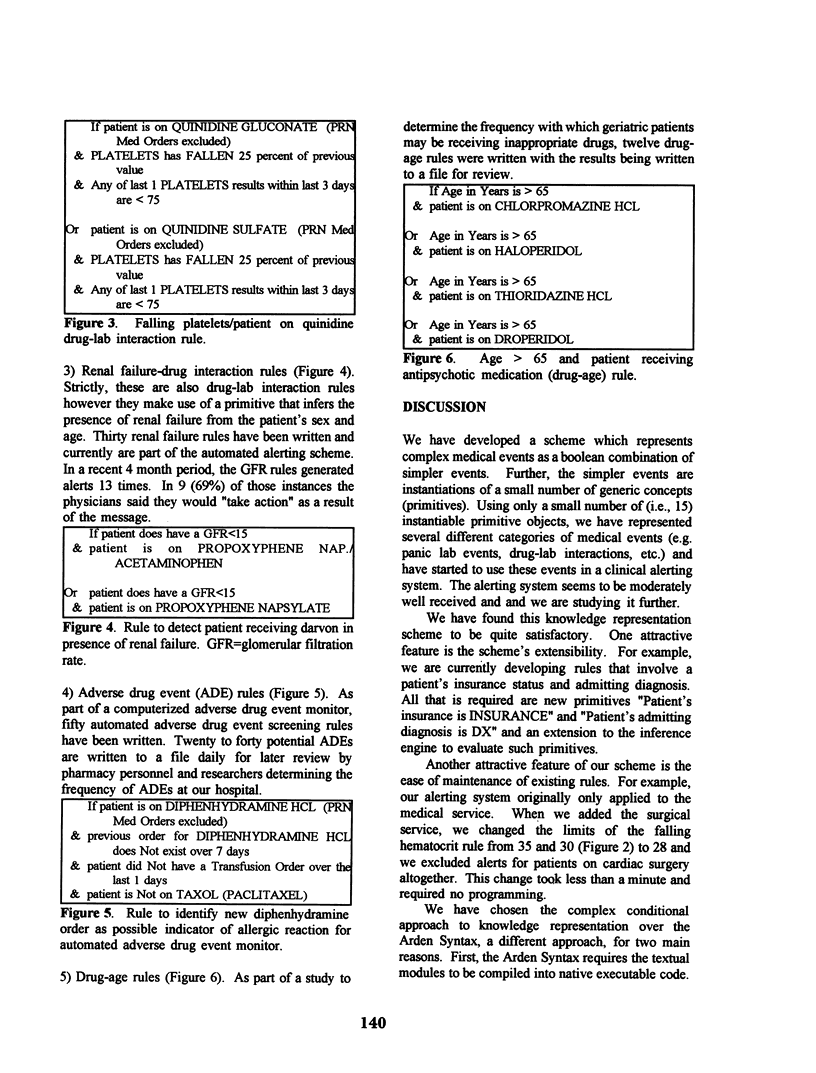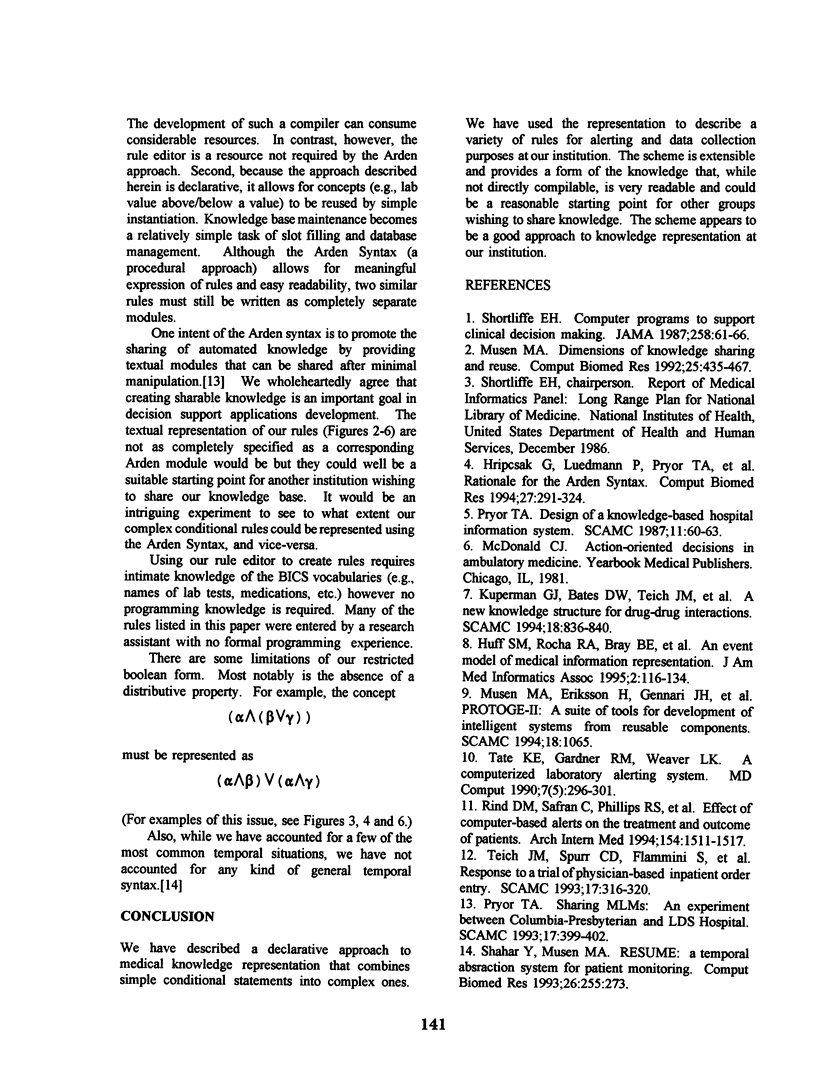Abstract
We have developed an approach to medical knowledge representation whereby simple medical concepts are combined to yield complex statements of testable medical logic. The logic is created from a small number of generic medical concepts that are instantiated and combined to create the rules. Rule writing is done through a rule editor and requires knowledge of the system's data dictionaries, though no programming is required. We have used the approach to create a large knowledge base including panic lab alerting rules, drug-laboratory interaction alerting rules, an adverse drug event monitor, and a drug-age interaction detection program. The rules have been used as part of an alerting system and for data collection to determine the frequency of events of interest. The scheme is extensible and yields a readable form of the created knowledge. The scheme holds great promise as a durable form of medical knowledge representation.
Full text
PDF




Selected References
These references are in PubMed. This may not be the complete list of references from this article.
- Hripcsak G., Ludemann P., Pryor T. A., Wigertz O. B., Clayton P. D. Rationale for the Arden Syntax. Comput Biomed Res. 1994 Aug;27(4):291–324. doi: 10.1006/cbmr.1994.1023. [DOI] [PubMed] [Google Scholar]
- Huff S. M., Rocha R. A., Bray B. E., Warner H. R., Haug P. J. An event model of medical information representation. J Am Med Inform Assoc. 1995 Mar-Apr;2(2):116–134. doi: 10.1136/jamia.1995.95261905. [DOI] [PMC free article] [PubMed] [Google Scholar]
- Kuperman G. J., Bates D. W., Teich J. M., Schneider J. R., Cheiman D. A new knowledge structure for drug-drug interactions. Proc Annu Symp Comput Appl Med Care. 1994:836–840. [PMC free article] [PubMed] [Google Scholar]
- Musen M. A. Dimensions of knowledge sharing and reuse. Comput Biomed Res. 1992 Oct;25(5):435–467. doi: 10.1016/0010-4809(92)90003-s. [DOI] [PubMed] [Google Scholar]
- Musen M. A., Eriksson H., Gennari J. H., Tu S. W., Puerta A. R. PROTEGE-II: a suite of tools for development of intelligent systems from reusable components. Proc Annu Symp Comput Appl Med Care. 1994:1065–1065. [PMC free article] [PubMed] [Google Scholar]
- Rind D. M., Safran C., Phillips R. S., Wang Q., Calkins D. R., Delbanco T. L., Bleich H. L., Slack W. V. Effect of computer-based alerts on the treatment and outcomes of hospitalized patients. Arch Intern Med. 1994 Jul 11;154(13):1511–1517. [PubMed] [Google Scholar]
- Shahar Y., Musen M. A. RESUME: a temporal-abstraction system for patient monitoring. Comput Biomed Res. 1993 Jun;26(3):255–273. doi: 10.1006/cbmr.1993.1018. [DOI] [PubMed] [Google Scholar]
- Shortliffe E. H. Computer programs to support clinical decision making. JAMA. 1987 Jul 3;258(1):61–66. [PubMed] [Google Scholar]
- Tate K. E., Gardner R. M., Weaver L. K. A computerized laboratory alerting system. MD Comput. 1990 Sep-Oct;7(5):296–301. [PubMed] [Google Scholar]
- Teich J. M., Spurr C. D., Flammini S. J., Schmiz J., Beckley R. F., Hurley J. F., Aranow M., Glaser J. P. Response to a trial of physician-based inpatient order entry. Proc Annu Symp Comput Appl Med Care. 1993:316–320. [PMC free article] [PubMed] [Google Scholar]


